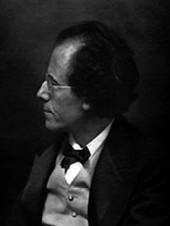

Gustav Mahler
Symphony No. 9
Short instrumentation: 1 1 2 1 - 2 1 0 0 - perc, harm, pno, str (1 1 1 1 1, max. 6 5 4 3 2)
Duration: 75'
Bearbeitung: Klaus Simon
Instrumentation details:
flute (+picc)
oboe (+c.a)
1st clarinet in B, A (+cl(Eb))
2nd clarinet in B, A (+bass cl(Bb))
bassoon
1st horn in F
2nd horn in F
trumpet in Bb
percussion
harmonium
piano
violin I
violin II
viola
violoncello
double bass
Mahler - 9. Symphonie for ensemble or chamber orchestra
Printed/Digital
Translation, reprints and more

Gustav Mahler
Mahler: Symphonie Nr. 9 (Kammerorch.) D majorOrchestration: für Ensemble oder Kammerorchester
Type: Partitur
Sample pages
Audio preview
Work introduction
The knowledge that for two of the immortals of symphonic history – Beethoven and Bruckner – their ninth symphony was also their last would both challenge and irritate any composer with a historic awareness as strong as Gustav Mahler’s. Mahler certainly regarded himself as successor of the named composers, for whom the ‘symphony’ was the supreme form of composition. A good measure of superstition played a role in this perception, but one should also not ignore the fact that the movement of ‘Symbolism’, which strove to demonstrate connections between generally understandable symbols and personal destiny, was an important concept in the poetry and art of the time.
Mahler at first elegantly but consciously, if one is to believe the memoirs of his wife Alma, avoided the problem by giving the composition following his Symphony No. 8 the title Das Lied von der Erde and only calling it ‘A Symphony for one Tenor and one Alto’ in the subtitle. But the title page of Symphony No. 9 shows that Mahler obviously had problems with the number ‘IX’; it is recognizable that the first of the two symbols was added to the ’X’ at a later time.
The work was composed in a single summer, that of the year 1909 in Toblach / Dobbiaco. In a letter to Bruno Walter from his holiday domicile, Mahler wrote: ‘I have been very diligent and am presently finishing a new symphony. […] It expresses thoughts that I have meant to express for the longest time.’
Reinhold Kubik
May 2009
